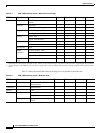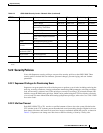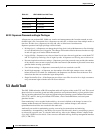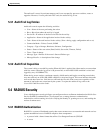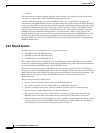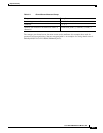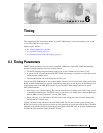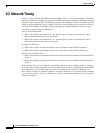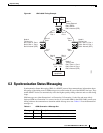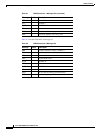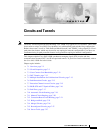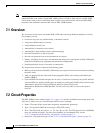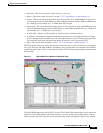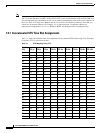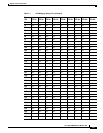
6-2
Cisco ONS 15600 Reference Manual, R7.2
Chapter 6 Timing
6.2 Network Timing
6.2 Network Timing
Figure 6-1 shows an ONS 15600 network timing example. Node 1 is set to external timing. Two timing
references are Stratum 1 timing sources wired to the BITS input pins on the Node 1 backplane. The third
reference is set to internal clock. The BITS output pins on the backplane of Node 3 are used to provide
timing to outside equipment, such as a digital access line access multiplexer. In the event of a failure of
one of the TSC modules, the redundant TSC module provides timing for BITS out. There are some
restrictions on the provisioning of BITS out:
If the system is BITS timed:
•
BITS-1 Out can have one reference if a 1+1 protected pair is chosen or two references can be
selected if unprotected line sources are chosen.
•
BITS-2 Out can have one reference if a 1+1 protected pair is chosen or two references can be
selected if unprotected line sources are chosen.
If system is LINE timed:
•
BITS-1 Out can have one unprotected line source and either or both of the NE references.
•
BITS-2 Out can have one unprotected line source and either or both of the NE references.
If the system is in mixed mode:
•
BITS-1 Out can have one unprotected line source and any line source selected as NE reference Ref-1
or Ref-2.
•
BITS-2 Out can have one unprotected line source and any line source selected as NE reference Ref-1
or Ref-2.
In the example, Slots 11 and 12 of Node 1 contain the trunk (span) cards. Timing at Nodes 2, 3, and 4 is
set to line, and the timing references are set to the trunk cards according to the distance from the BITS
source. Reference 1 is set to the trunk card closest to the BITS source. At Node 2, Reference 1 is
Slot 11/Port 1 because it is connected to Node 1. At Node 4, Reference 1 is set to Slot 12/Port 1 because
it is connected to Node 1. At Node 3, Reference 1 could be either trunk card because they are an equal
distance from Node 1.



